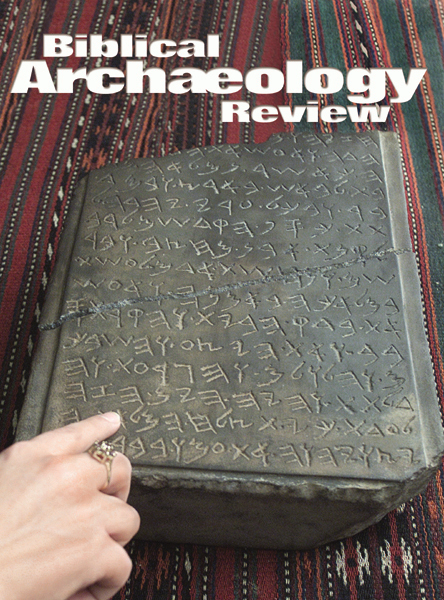Image Details

Photo by Associated Press
ON THE COVER: This 9-by-11-inch black sandstone plaque, brought to light in recent months, is either one of the most significant Bible-related artifacts ever found or a highly sophisticated fraud. Adding to its mysterious aura is the fact that no one knows when and where it was found or even who owns it; and just recently it was cracked when taken into custody by police in Israel. The plaque’s 15-line inscription purports to describe renovations to the Jerusalem Temple by King Jehoash of Judah (835–801 B.C.), and its language closely mirrors passages in the Books of Kings and Chronicles. Many leading linguists and paleographers (specialists in ancient inscriptions) are convinced the text is a forgery, but geologists who have examined the slab say the writing is ancient. They point to the stone’s patina—a microscopic film that takes centuries to develop—as proof. Others counter that patina can be faked. But if that’s true, let’s see someone do it, writes BAR editor Hershel Shanks, in “Create a Fake and Win $10,000.” Full contest rules appear here, and there are two related articles, under the heading “Assessing The Jehoash Inscription,” “The Paleographer: Demonstrably a Forgery,” and “The Linguist: Hebrew Philology Spells Fake.”
